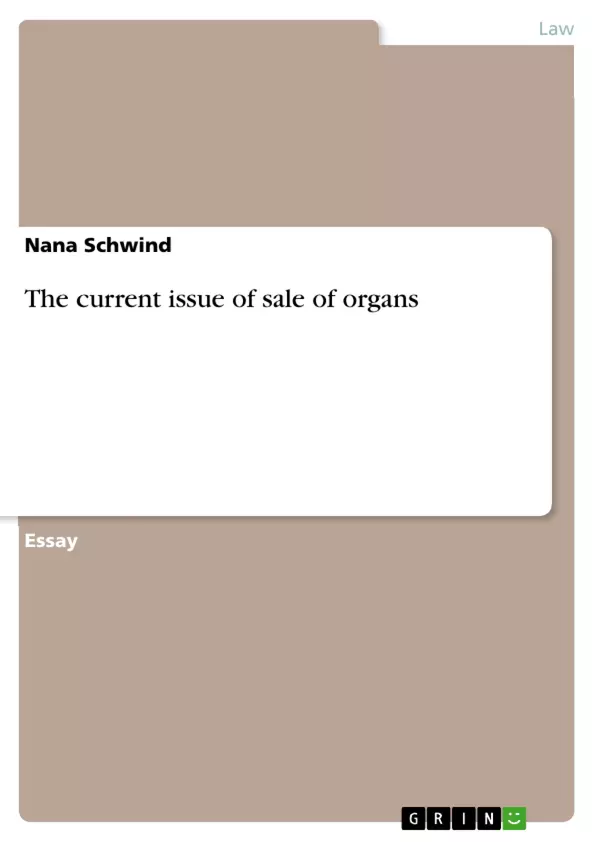In this essay the current issue of sale of organs is placed under a microscope. First the existing problematic of an organ shortage in the UK is evaluated based on actual data. In addition already existing national and European regulations regarding to the sale of organs are demonstrated. The obvious requirement of an urgent action to increase the organ supply leads to the question of a suitable problem solution.
The theory of successful regulations are analysed and applied to the creation of a regulated living- donor transplant market in organs as a possible solution to increase the number of organs available. This includes especially a balance of possible risks and benefits while standard-setting, finding a way to motivate individuals to increase the organ supply as a means of behaviour modification as well as establishing an appropriate mechanism of information-gathering.
At least the already existing legal organ trade market of Iran is illustrated. Advantages and disadvantages of this
market are demonstrated. It is also shown which of the regulating mechanism seem to be useful or alternatively devious to apply to other countries, such as the UK.
Inhaltsverzeichnis (Table of Contents)
- I. Introduction
- II. Organ Shortage
- a) Explanation/data
- b) Existing regulations
- III. Solution
- a) Formal Market in organs
- aa) Theory of a good regulatory regime
Zielsetzung und Themenschwerpunkte (Objectives and Key Themes)
This essay aims to evaluate the current issue of organ sales and explore potential solutions for addressing the organ shortage in the UK. It examines existing regulations, analyzes the effectiveness of current measures, and proposes a regulated market for organs as a possible solution. The essay investigates the theory of a successful regulatory regime and analyzes its applicability to the organ market.
- Organ Shortage in the UK
- Existing Regulations and Legal Frameworks
- Theory of a Good Regulatory Regime
- Formal Market for Organs as a Solution
- Ethical and Practical Implications of Organ Market
Zusammenfassung der Kapitel (Chapter Summaries)
The essay begins by outlining the current organ shortage in the UK, providing data to support its existence. It then examines the legal framework surrounding organ transplantation, including the Human Tissue Act 2004 and the Human Tissue (Scotland) Act 2006, as well as relevant European regulations.
The essay moves on to discuss potential solutions to the organ shortage, focusing on the creation of a regulated market for organs. The theory of a good regulatory regime, encompassing standard-setting, behavior-modification, and information-gathering, is explored as a framework for establishing a successful organ market.
Schlüsselwörter (Keywords)
Organ Shortage, Organ Transplantation, Organ Donation, Human Tissue Act, European Regulations, Regulatory Regime, Formal Market, Living-Donor, Behavior Modification, Information-Gathering.
- Quote paper
- Nana Schwind (Author), 2015, The current issue of sale of organs, Munich, GRIN Verlag, https://www.grin.com/document/478239



